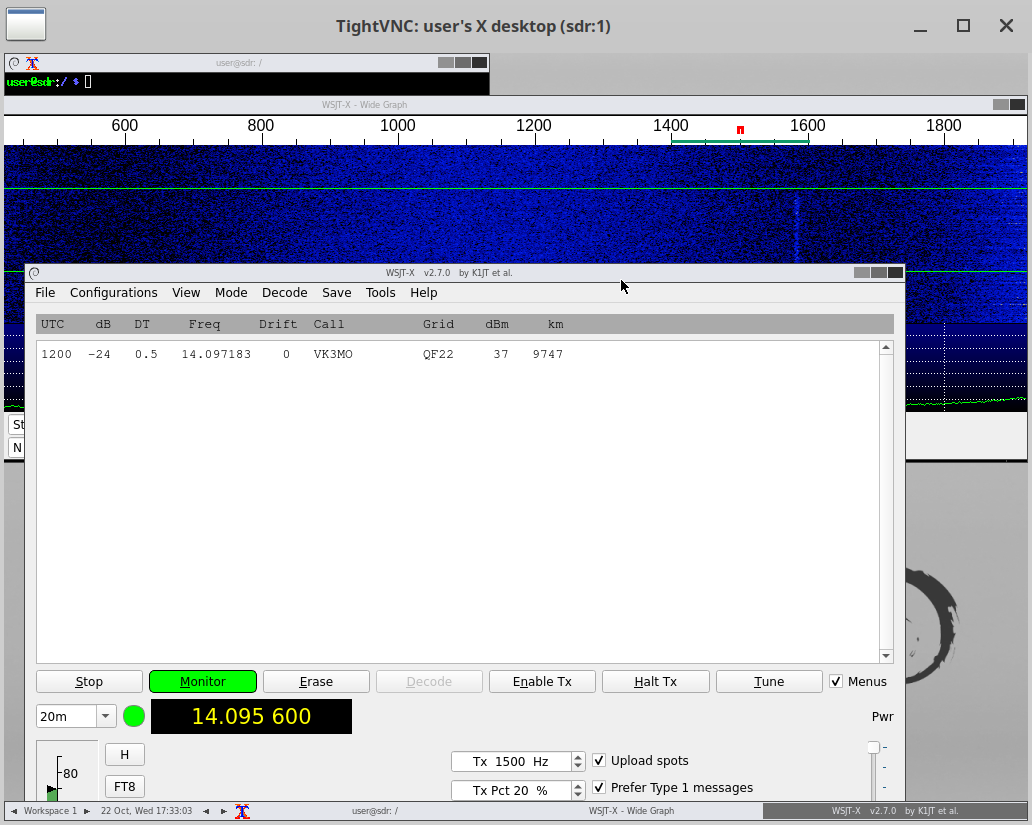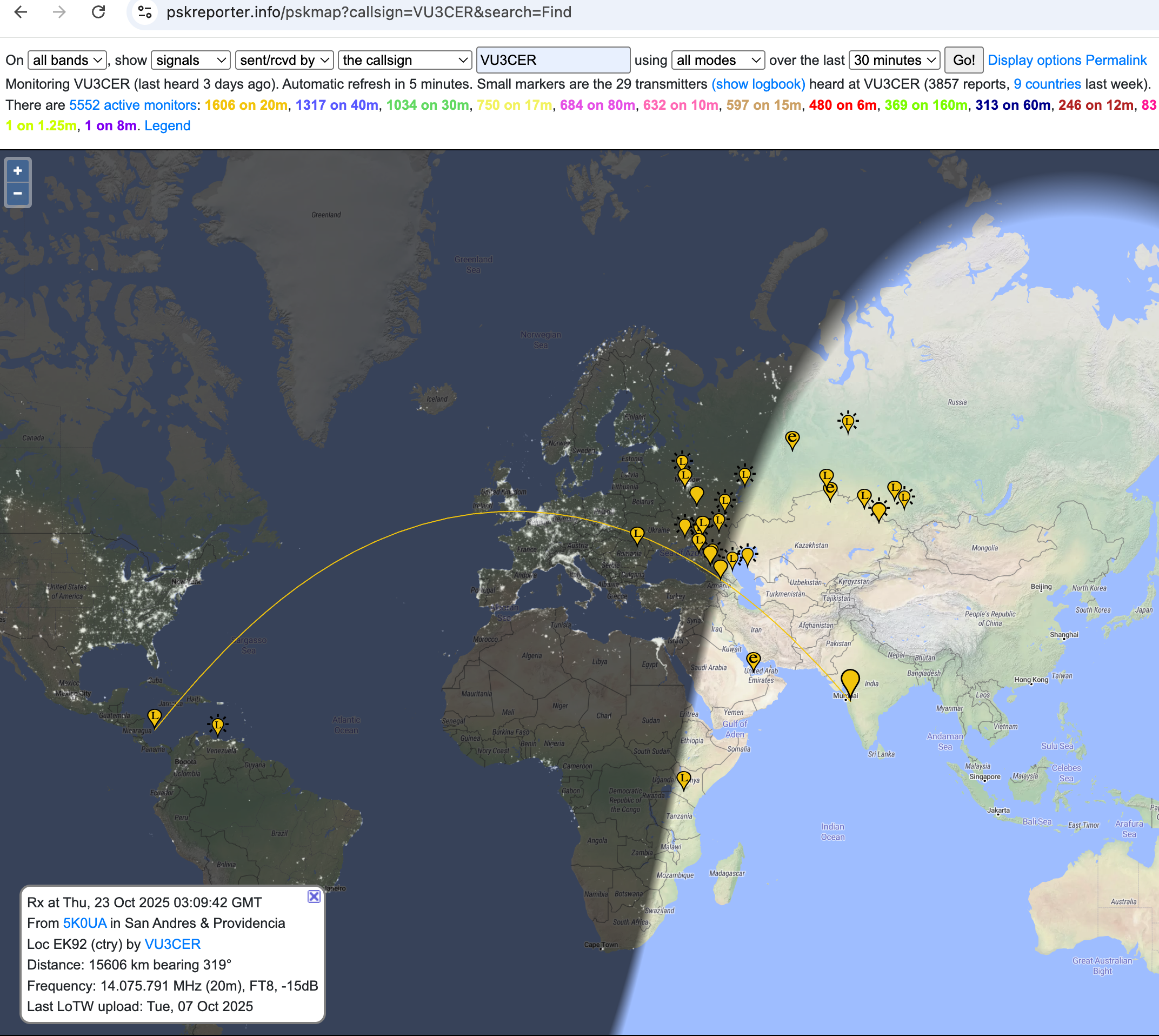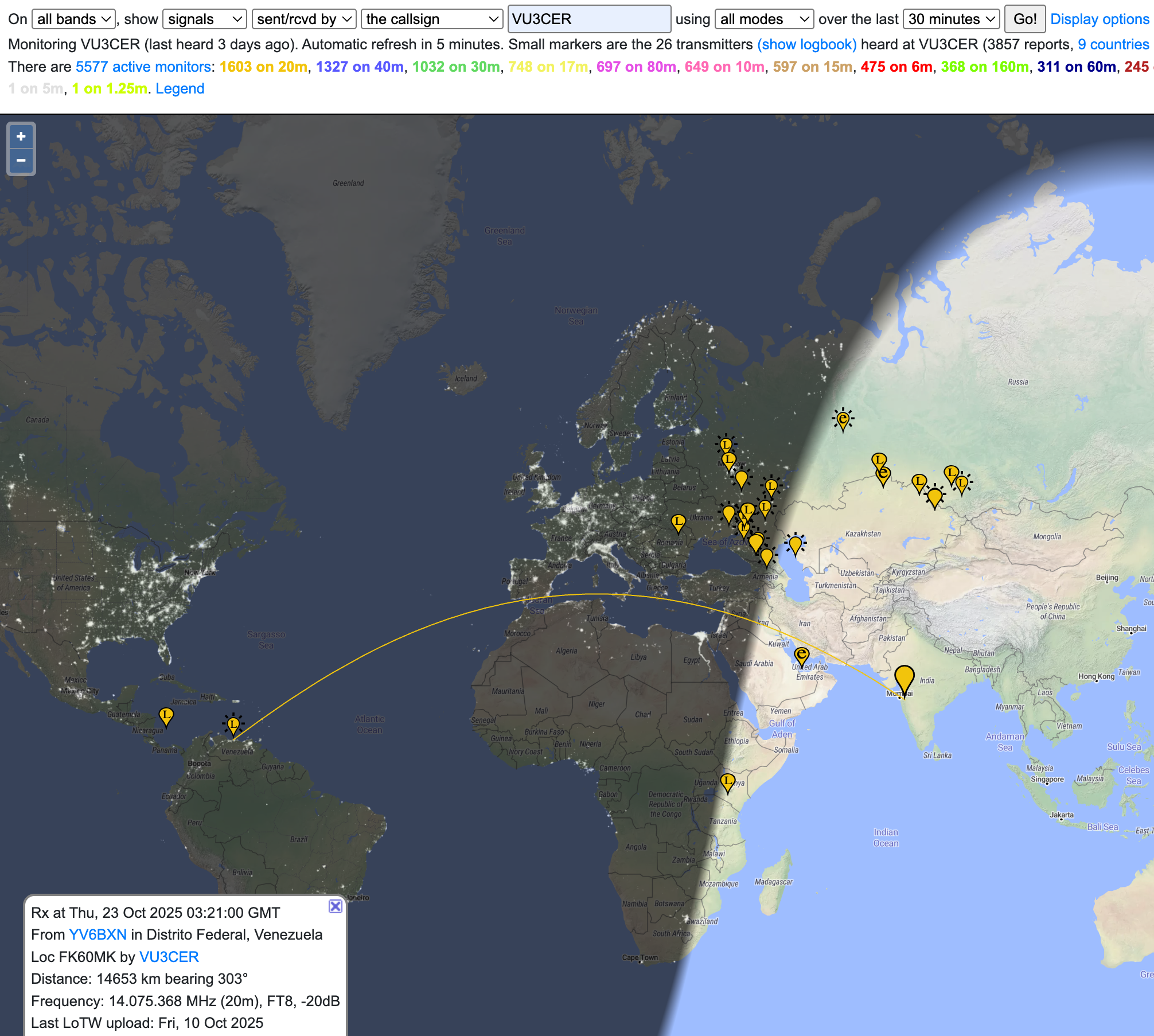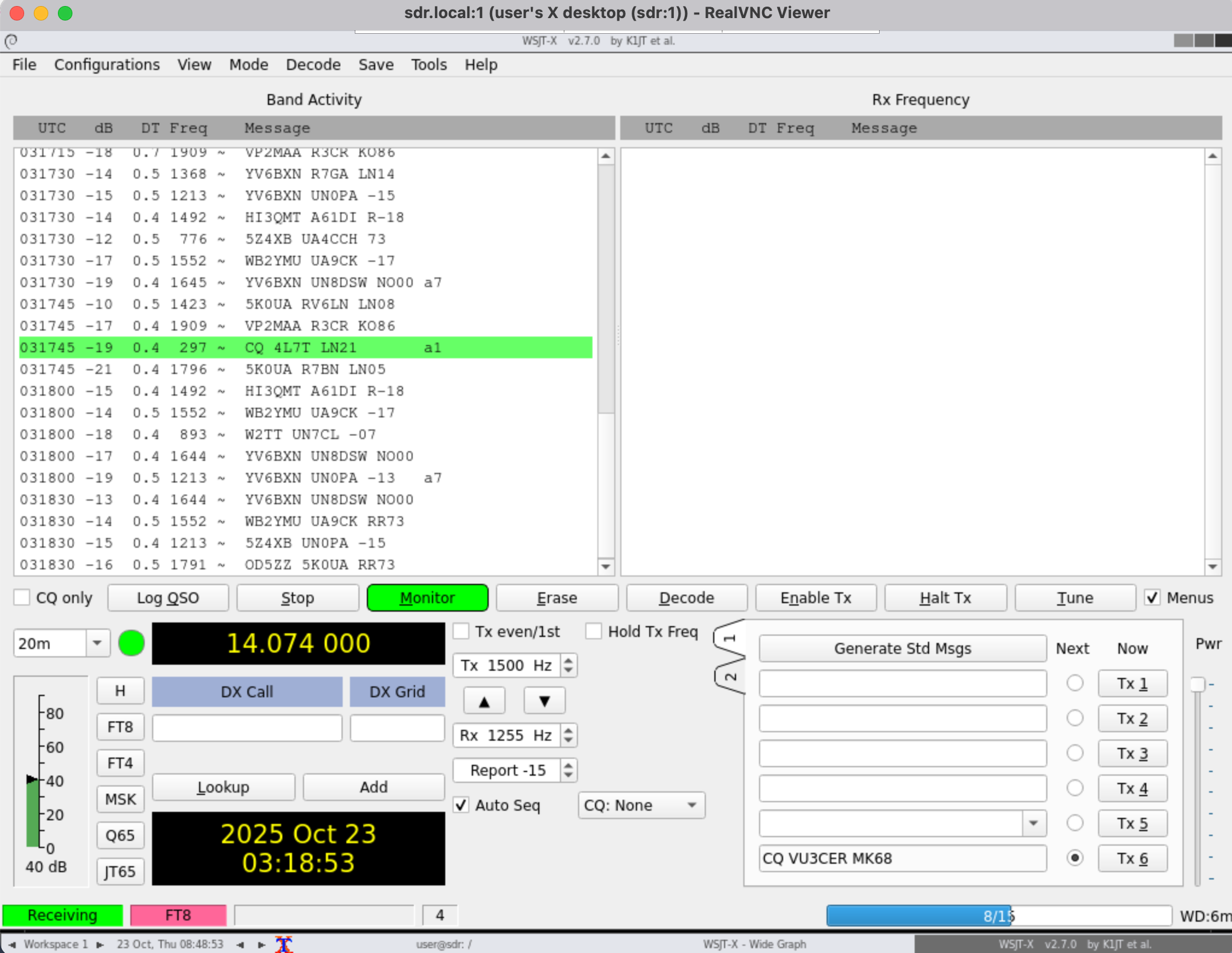Setup OS and SDR
Please use the latest Raspberry Pi OS 64-bit on RPi 4 or later.
Using a Raspberry Pi (<=3) is NOT recommended as it has quite a bit of power supply noise on the USB ports, which reduces the performance of the connected SDR.
Install dependencies:
sudo apt-get update
sudo apt-get install airspyhf \
soapysdr-tools sox libsox-fmt-all wsjtx \
pulseaudio-utils git vim fluxbox xterm tightvncserver
sudo apt-get install cmake pkg-config \
libusb-1.0-0-dev \
libasound2-dev \
libairspy-dev \
libairspyhf-dev \
librtlsdr-dev \
libsndfile1-dev \
portaudio19-dev \
libvolk-dev
Build airspyhf-fmradion SDR software:
cd ~
git clone --recursive https://github.com/jj1bdx/airspy-fmradion.git
cd airspy-fmradion
cmake .
make -j8
Optional: Install https://tailscale.com/ on the RPi.
Recommended: Use a RF clipper for protecting the SDR - see https://www.kk5jy.net/rf-clipper/ for details.
Antenna: See My PA0FRI Active Antenna article for details on the "best" antenna for RX purposes.
Setup: Active antenna ➔ 20 meter BPF ➔ RF limiter ➔ SDR
Tips
- Check time sync on RPi using the
timedatectl show-timesynccommand
Setup Headless Hopping Skimmer
$ vim ~/.asoundrc
pcm.!default {
type hw
card 2
}
ctl.!default {
type hw
card 2
}
On RPi systems, set dtparam=audio=off in /boot/firmware/config.txt file and reboot.
pi@sdr:~$ aplay -l
**** List of PLAYBACK Hardware Devices ****
card 0: vc4hdmi0 [vc4-hdmi-0], device 0: MAI PCM i2s-hifi-0 [MAI PCM i2s-hifi-0]
Subdevices: 1/1
Subdevice #0: subdevice #0
card 1: vc4hdmi1 [vc4-hdmi-1], device 0: MAI PCM i2s-hifi-0 [MAI PCM i2s-hifi-0]
Subdevices: 1/1
Subdevice #0: subdevice #0
card 2: Loopback [Loopback], device 0: Loopback PCM [Loopback PCM]
Subdevices: 7/8
Subdevice #0: subdevice #0
Subdevice #1: subdevice #1
Subdevice #2: subdevice #2
Subdevice #3: subdevice #3
Subdevice #4: subdevice #4
Subdevice #5: subdevice #5
Subdevice #6: subdevice #6
Subdevice #7: subdevice #7
card 2: Loopback [Loopback], device 1: Loopback PCM [Loopback PCM]
Subdevices: 8/8
Subdevice #0: subdevice #0
Subdevice #1: subdevice #1
Subdevice #2: subdevice #2
Subdevice #3: subdevice #3
Subdevice #4: subdevice #4
Subdevice #5: subdevice #5
Subdevice #6: subdevice #6
Subdevice #7: subdevice #7
...
Add the following lines to /etc/rc.local file:
pi@sdr:~$ cat /etc/rc.local
#!/bin/bash
sudo modprobe snd-aloop enable=1,1,1 index=1,2,3
sudo -H -u user /usr/bin/tightvncserver &
sudo -H -u user bash -c "cd ~/airspy-fmradion && ./airspy-fmradion -t airspyhf -c freq=14095600 -m usb -P - &"
chmod +x /etc/rc.local
$ cat ~/.vnc/xstartup
#!/bin/sh
xrdb "$HOME/.Xresources"
fluxbox &
xterm &
xsetroot -solid grey
# Fix to make GNOME work
export XKL_XMODMAP_DISABLE=1
/etc/X11/Xsession
chmod +x ~/.vnc/xstartup
Set up the VNC password (once):
vncpasswd
In WSJT-X do the following:
File > Settings > Audio, Input Set to "plughw:CARD=Loopback,DEV=1", "Left"
File > Settings > Audio, Output Set to "plughw:CARD=Loopback_1,DEV=0", "Both"
It works!

FT8 reception using Active Antenna


